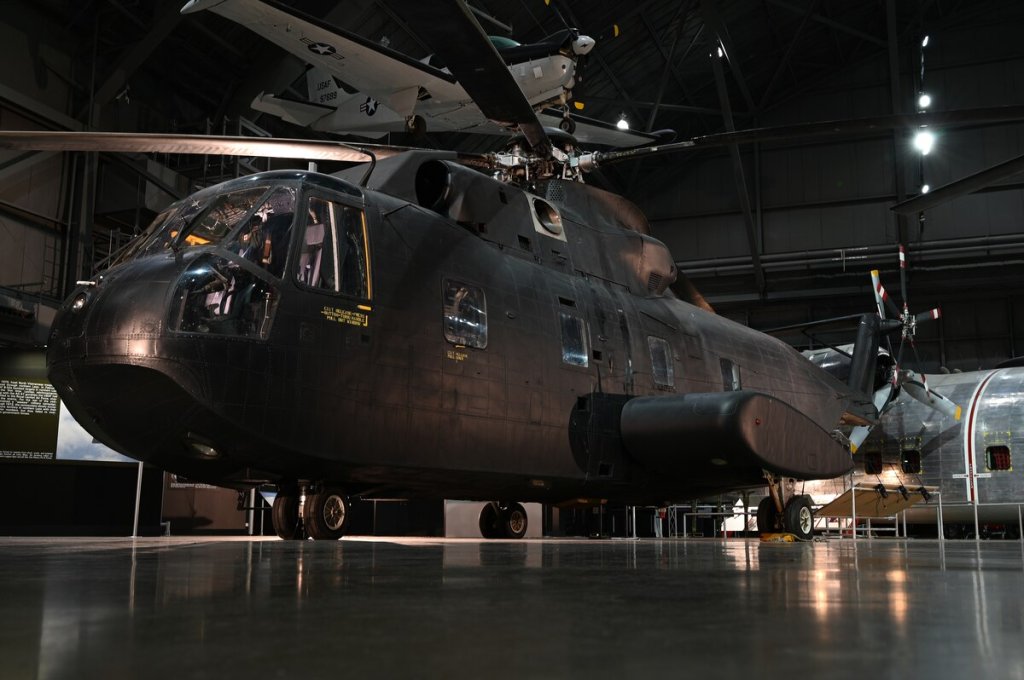

The National Museum of the United States Air Force in Dayton, Ohio, is probably one of the coolest military museums in the world, and might be the number one military museum in America. It has a number of massive hangars that act as galleries for aircraft, from the beginning of aviation to the wars in Iraq and Afghanistan. They even have a few ICBMs and atomic bombs on display.
It’s important to remember that a lot of these aircraft were actually used in American wars, and as a result, some of the crew members died aboard the aircraft on display. While we honor the dead who fought for American freedom and freedom around the world, some of us have seen that the honored dead are still hanging around in the museum. Here are just a few ghosts that have been repeatedly reported inside those hangars.
Take a look at the 4 ghosts that haunt the Museum of the U.S. Air Force
1. The crew of the “Strawberry Bitch”
Aircrews in World War II famously named their planes and included nose art to keep morale up. The Strawberry Bitch was no different. It’s a B-24 Liberator Bomber that served with the 12th Bomb Squadron, 376th Bomb Group of the 15th Air Force based in Libya and Italy and featured a fiery redhead on its nose.
Visitors and guards in the museum have reported strange lights inside the plane, rattling guns and even an apparition of the B-24’s belly gunner, who was reportedly killed in combat in the plane, getting ready for takeoff. One janitor even reported being slapped by an unseen entity near the fuselage.

2. “Bockscar”
The Bockscar is a B-29 Superfortress bomber that dropped the atomic bomb codenamed Fat Man over the Japanese city of Nagasaki in 1945. The plane had been used on at least three other combat missions over Japan before dropping a nuclear weapon that leveled 44% of the city and killed 35,000 people. Sitting next to it at the museum is a replica of the Fat Man bomb.
Some say the spirit of a small Japanese boy is forever attached to the Bockscar plane, and his spirit can be seen running around the area at night, usually when most people have left the museum.

3. The “Hopalong”
The Hopalong is a Sikorski UH-19B Chickasaw, a helicopter used by the Air Force in the 1950s and 1960s. During the Korean War, helicopters like the Hopalong were used as the primary means of medical evacuation, getting wounded troops to surgery. But the North Koreans, unsurprisingly, didn’t care about the wounded getting treatment and targeted these helicopters anyway.
Visitors can’t see from the gallery, but the last pilot of the Hopalong was supposedly killed in the cockpit and the seat is allegedly still stained with his blood. Some viewers have reported seeing a man in the pilot’s seat, flipping switches and preparing the aircraft for flight.

4. The “Black Mariah”
This Sikorsky CH-3E is similar to the Navy’s amphibious Sikorsky S-61. The helicopter “Black Mariah,” now housed at the Air Force Museum, was used for combat rescue missions and secret special operations with the 20th Helicopter Squadron.
Some visitors have reported hearing the voices of crew members who flew in the helicopter, as well as the moans and groans of dying men who were being transported back to base. Before coming back to the museum in Ohio, the Black Mariah was allegedly still riddled with bullet holes, and the moans of the dead usually show up at night.
